The closest this columnist came to the upset midterm result was the headline of last Saturday’s pre-electoral editorial “Tomorrow never knows,” and the closest this column came was when raising the possibility of the stunning defeat in the September 7 Buenos Aires Province midterms being “a blessing in disguise … who knows whether, in hindsight, it might not have proved a lifeline?” Yet the logic behind this assertion was flawed – it pointed to the government having the chance to rethink in time the folly of painting itself into a corner with a “purple or nothing” strategy when today that strategy would seem to stand supremely vindicated.
Umpteen opinion pieces have already been written on these midterms and this column will try to steer clear of general conclusions, looking at the nuts and bolts as this series has tended to do since its start on April 12 and concentrating on quantitative analysis while leaving the qualitative to the other columnists.
But before going into detail, a couple of general points. While pundits have attributed La Libertad Avanza’s triumph to the doubts about what President Javier Milei is doing being outweighed by the certainty of what Kirchnerism would do, this journalist is inclined to locate the fear factor elsewhere – terror that the wheels could come off the economy completely if they came off the government with the crisis of the preceding six weeks spiralling into total collapse without political stability. The other point is to suggest that this electoral process has been decided more by those who did not vote than those who did – if the Buenos Aires Province midterms were such a disaster for Milei because around five centre-right voters sat them out for every Peronist, the 32 percent of the electorate staying at home last Sunday might well have been around half of those who cannot make it to the end of the month, highly dissatisfied with libertarian austerity but not convinced by any of the alternatives.
Entering into details, the obvious place to start is Buenos Aires Province as both the biggest district and the biggest surprise. A surprise bordering on shock in the current context especially (following the loss by a massive 13.57 percent in the aforementioned provincial polls and with the huge handicap of having the photograph of the disgraced José Luis Espert topping the libertarian list) but perhaps less of a surprise when looking at recent history. Despite governing the province for 34 of the last 42 years, the Peronists ran up a hat-trick of national midterm defeats there last Sunday – in 2017 the score was 42.15 percent for Mauricio Macri’s Cambiemos to 41.48 percent for Peronism (calculated by adding Kirchnerism to Florencio Randazzo’s Justicialists while excluding Sergio Massa’s more polychrome movement), in 2021 Juntos spearheaded by Diego Santilli polled 39.77 percent to 38.59 percent for Frente de Todos and last Sunday it was 41.45 percent for Alianza La Libertad Avanza with Santilli again as against 40.92 percent for Jorge Taiana’s Fuerza Patria, three remarkably similar results all with slender margins adverse to Peronism.
One striking feature of Santilli’s 41.45 percent was that it actually topped the national average of 40.84 percent in theoretically the most difficult province – a contrast with 2023 when Milei performed impressively inland while losing Buenos Aires Province where he polled 49.24 percent as against 55.65 percent nationwide in the run-off.
When comparing last September’s provincial midterms to last Sunday, we might not be mixing apples and oranges but we are talking about two different electorates with two different turnouts – 14,376,592 people were qualified to vote last September because foreigners are enfranchised at provincial level (just as they may vote for mayor but not for president in this city) whereas last Sunday’s electorate was 13,353,974. Just over a million people from September’s voting were thus excluded last Sunday and this might be assumed to hurt Fuerza Patria since most foreigners come from Latin American countries and often live in low-income neighbourhoods, while immigrants are presumably less inclined to vote for friends of Donald Trump. Turnout was 61.04 percent last September and 68.19 percent last Sunday when around 336,000 more people voted out of a smaller electorate.
Last Sunday’s race in Buenos Aires Province was more polarised than both last September’s provincial version and nationwide. The combined votes of the two main lists (electing 33 of the 35 deputies at stake) were 82.37 percent of the total as against 72.4 percent nationwide and 71.13 percent in last September’s provincial midterms. The latter featured various bits and pieces like Somos and Hechos and even libertarian splinters netting over a quarter million votes but almost vanishing last Sunday.
Hechos was a creation of the mayors of San Nicolás and Pergamino and mayors of all parties were the driving-force of last September’s voting. The clout of the 84 Peronist mayors in that election has been widely commented and needs no repetition but just to drive the point home, libertarian percentages rose from September in 133 of the 135 districts last Sunday with the only falls coming in two strongholds with high-profile mayors: General Pueyrredón (Mar del Plata) under Guillermo Montenegro and Diego Valenzuela’s Tres de Febrero. Not that Milei did at all badly in those two places, quite the contrary, but the mayoral input was missing.
The elections might now be over with an extremely clear result but not this series with plenty of ground still to cover. The above does not even exhaust Buenos Aires Province with this city and inland still pending. While widely perceived as a plebiscite, the voting was ostensibly to elect deputies and senators with the new members requiring further scrutiny. Not to mention such questions as whither Peronism in the light of these results. This series will thus continue for five more weekends until the new Congress is sworn in on December 10 unless it runs out of material beforehand.










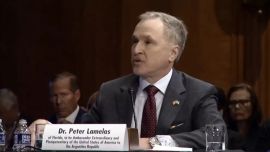
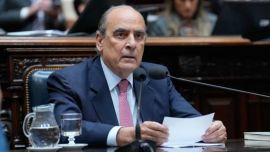



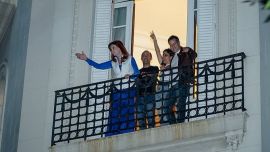
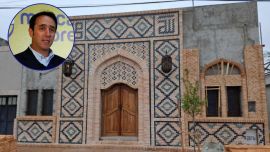
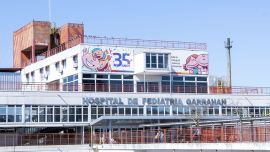

Comments